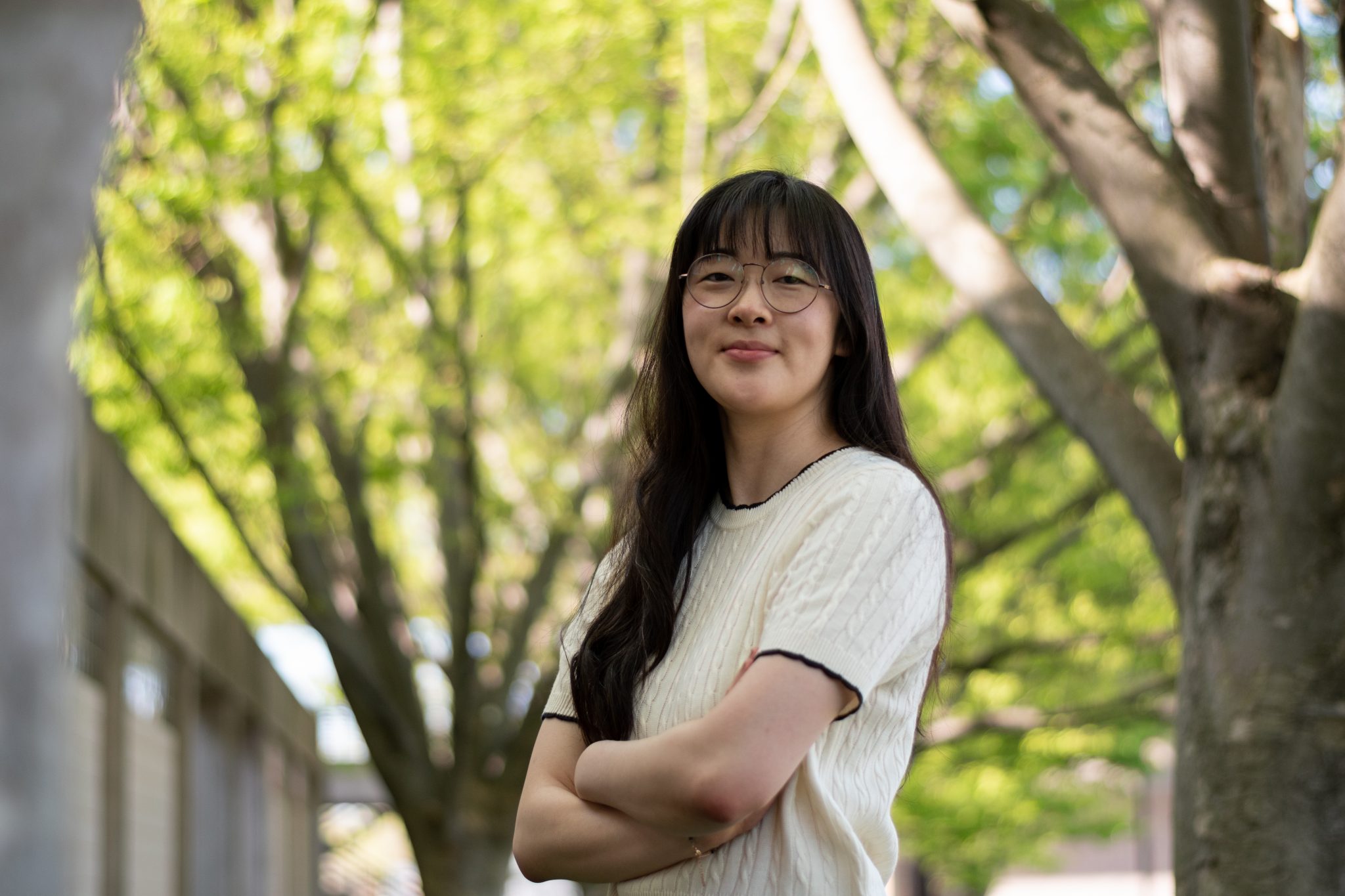Sarah Na, a senior environmental science and technology major at the University of Maryland, discovered a process to more effectively turn food waste into renewable energy.
During a 10-week lab study last summer, Na found that when fermented food waste is put into a biodigester — a system that breaks down organic matter like food waste — it produces twice as much biogas, which can be used for renewable energy.
Fermented food waste is a product that has already been partially broken down, in contrast to non-fermented. Once it is converted to methane, it can be used to produce heating, electricity and fertilizer.
“It really saddened me that I would go into a forest or to a lake, and then instead of catching a fish or seeing animals, I’d see trash,” Na said. “We could use it again instead of sending it to the dumps.”
For more than two years, Na has worked with and researched food waste energy. During her 10-week food waste to bioenergy study with the Summer Opportunities in Agricultural Research and the Environment program at this university, she made a breakthrough.
During the program, Na worked in the Bioenergy and Bioprocessing Technology Lab, which focuses on creating renewable energy from waste while understanding the mechanics of ecological, engineering and social systems that influence renewable energy.
[UMD team places in top three in national marketing case competition]
The lab is led by Stephanie Lansing, a professor at the agriculture and natural resources college, who has more than 20 years of experience in renewable energy research, outreach education and economic and sustainability analyses of waste to energy systems.
“It’s just so easy to throw something away,” Lansing said. “We can actually use this idea of a circular bioeconomy to actually bring what we think of as waste, instead of putting it into the landfill, back into the economy.”
Lansing said the Prince George’s County landfill is almost full and it’s important to think of ways to reduce the amount of waste. A major issue, she said, is the “waste culture” in the United States compared to Europe, where renewable technologies have been heavily implemented.
But it’s challenging to implement these technologies because incentives to make it easier for them to succeed need more exploration, Lansing said.
“It’s working with our county governments and working with the industry to show what we’re doing and enhancing that process and showing how much energy can really be there,” Lansing said.
Na’s discovery and other students’ efforts keeps Lansing “extremely optimistic,” as she believes younger generations understand the importance of environmental science.
[UMD student starts company to help small farmers find funding]
Emily McCoy, a senior environmental science and technology major, started working in Lansing’s lab a year before Na. She conducts similar experiments on food waste to renewable energy.
“I just really liked the concept of turning something that has zero value, a complete waste product, into something you can sell for energy,” McCoy said.
McCoy said the agriculture and natural resources college is a “tight knit” community and its research has given value and numbers to why the government should care about renewable systems.
Na hasn’t partnered with an organization to implement her discovery, but she’s planning to do follow up studies to make the process more efficient and applicable to more people.
“[I want to] just keep thinking of everything as something useful instead of something to throw away,” Na said. “That’s the change that I hope I can help contribute to.”



